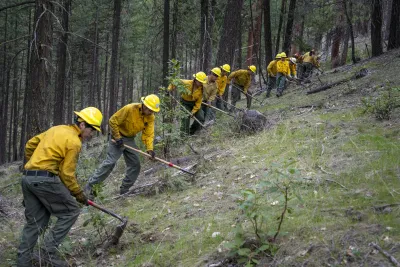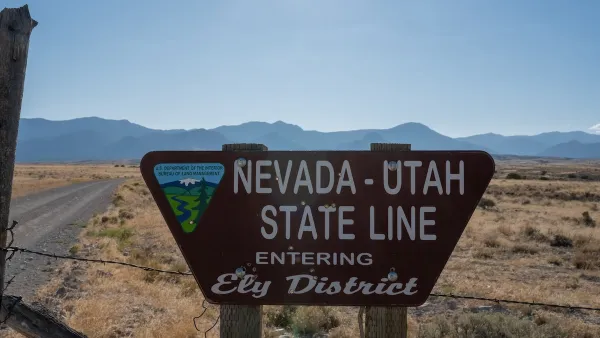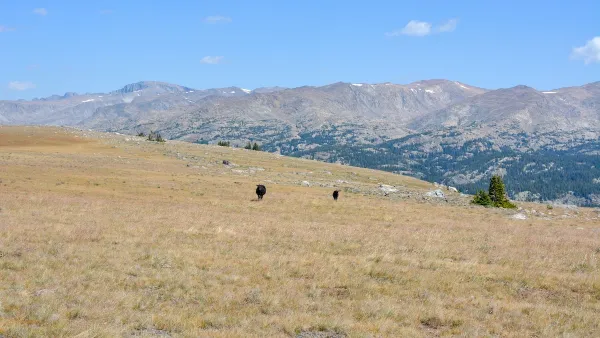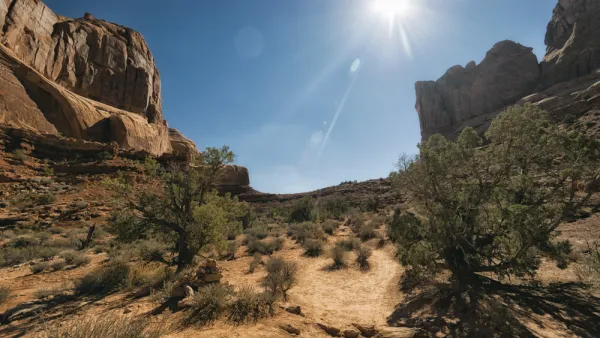A looming budget cut has led the Forest service to hit pause on seasonal staff hires and hiring external candidates for permanent agency positions, prompting concerns about the agency’s ability to achieve its mission.

The U.S. Forest Service recently announced a hiring freeze for seasonal staff and announced it won’t be hiring external candidates for any position within the agency in the 2025 fiscal year, according to an article from High Country News, in collaboration with Vox. The decision comes as the agency faces a “looming budget cut” after a recent spending bill passed by the U.S. House of Representatives granted around half a billion dollars less than the Forest Service requested. “All of this, combined with recent cost-of-living increases for staff, means that the agency is feeling strapped for cash,” writes High Country News contributing editor Nick Bowlin. The situation has sent ripples of shock across the nation, raising concerns that thousands of people will be left out of work and that essential conservation and biodiversity work will be at risk. The freeze does not apply to the 11,000 temporary firefighting positions the Forest Service hires annually.
Bowlin explains the scale of the problem: “Americans visit hiking and camping areas managed by the U.S. Forest Service more than 150 million times each year …. The agency relies on a large, often underappreciated army of seasonal or temporary workers who clean bathrooms and campgrounds, empty trash cans, maintain trails, welcome people at visitor centers and do critical research work on the environment.” Without seasonal workers, those tasks will have to be performed by full-time staff, pulling them away from their core duties, or left undone entirely. “And since seasonal work is a common steppingstone to a permanent role, many temporary workers who hoped for a career in public-land management now find themselves at a loss.” Also at risk is the skill and knowledge of long-time seasonal workers who may not return if and when the freeze is lifted.
The High Country News article outlines the extent of work performed by seasonal staff not only to maintain hiking and camping areas but also to clear brush and trees to reduce wildfire risk, manage wildlife habitat, and more. It also highlights interviews and concerns from forestry and conservation advocates, seasonal and permanent Forest Service employees, and public-private partners.
FULL STORY: The Forest Service is cutting its seasonal workforce and public lands will suffer

National Parks Layoffs Will Cause Communities to Lose Billions
Thousands of essential park workers were laid off this week, just before the busy spring break season.

Retro-silient?: America’s First “Eco-burb,” The Woodlands Turns 50
A master-planned community north of Houston offers lessons on green infrastructure and resilient design, but falls short of its founder’s lofty affordability and walkability goals.

Delivering for America Plan Will Downgrade Mail Service in at Least 49.5 Percent of Zip Codes
Republican and Democrat lawmakers criticize the plan for its disproportionate negative impact on rural communities.

Test News Post 1
This is a summary

Test News Headline 46
Test for the image on the front page.

Balancing Bombs and Butterflies: How the National Guard Protects a Rare Species
The National Guard at Fort Indiantown Gap uses GIS technology and land management strategies to balance military training with conservation efforts, ensuring the survival of the rare eastern regal fritillary butterfly.
Urban Design for Planners 1: Software Tools
This six-course series explores essential urban design concepts using open source software and equips planners with the tools they need to participate fully in the urban design process.
Planning for Universal Design
Learn the tools for implementing Universal Design in planning regulations.
EMC Planning Group, Inc.
Planetizen
Planetizen
Mpact (formerly Rail~Volution)
Great Falls Development Authority, Inc.
HUDs Office of Policy Development and Research
NYU Wagner Graduate School of Public Service





























